TMEM45A is essential for hypoxia-induced chemoresistance in breast and liver cancer cells
- PMID: 22954140
- PMCID: PMC3519606
- DOI: 10.1186/1471-2407-12-391
TMEM45A is essential for hypoxia-induced chemoresistance in breast and liver cancer cells
Abstract
Background: Hypoxia is a common characteristic of solid tumors associated with reduced response to radio- and chemotherapy, therefore increasing the probability of tumor recurrence. The aim of this study was to identify new mechanisms responsible for hypoxia-induced resistance in breast cancer cells.
Methods: MDA-MB-231 and HepG2 cells were incubated in the presence of taxol or etoposide respectively under normoxia and hypoxia and apoptosis was analysed. A whole transcriptome analysis was performed in order to identify genes whose expression profile was correlated with apoptosis. The effect of gene invalidation using siRNA was studied on drug-induced apoptosis.
Results: MDA-MB-231 cells incubated in the presence of taxol were protected from apoptosis and cell death by hypoxia. We demonstrated that TMEM45A expression was associated with taxol resistance. TMEM45A expression was increased both in MDA-MB-231 human breast cancer cells and in HepG2 human hepatoma cells in conditions where protection of cells against apoptosis induced by chemotherapeutic agents was observed, i.e. under hypoxia in the presence of taxol or etoposide. Moreover, this resistance was suppressed by siRNA-mediated silencing of TMEM45A. Kaplan Meier curve showed an association between high TMEM45A expression and poor prognostic in breast cancer patients. Finally, TMEM45 is highly expressed in normal differentiated keratinocytes both in vitro and in vivo, suggesting that this protein is involved in epithelial functions.
Conclusion: Altogether, our results unravel a new mechanism for taxol and etoposide resistance mediated by TMEM45A. High levels of TMEM45A expression in tumors may be indicative of potential resistance to cancer therapy, making TMEM45A an interesting biomarker for resistance.
Figures
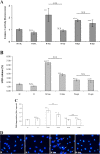
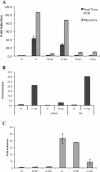
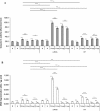
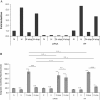

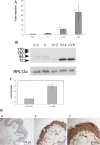
Similar articles
-
miRNA-196b inhibits cell proliferation and induces apoptosis in HepG2 cells by targeting IGF2BP1.Mol Cancer. 2015 Apr 8;14:79. doi: 10.1186/s12943-015-0349-6. Mol Cancer. 2015. PMID: 25889892 Free PMC article.
-
Hypoxia counteracts taxol-induced apoptosis in MDA-MB-231 breast cancer cells: role of autophagy and JNK activation.Cell Death Dis. 2013 May 16;4(5):e638. doi: 10.1038/cddis.2013.167. Cell Death Dis. 2013. PMID: 23681233 Free PMC article.
-
BNIP3 protects HepG2 cells against etoposide-induced cell death under hypoxia by an autophagy-independent pathway.Biochem Pharmacol. 2010 Oct 15;80(8):1160-9. doi: 10.1016/j.bcp.2010.07.009. Epub 2010 Jul 15. Biochem Pharmacol. 2010. PMID: 20637734
-
Taxol-induced unfolded protein response activation in breast cancer cells exposed to hypoxia: ATF4 activation regulates autophagy and inhibits apoptosis.Int J Biochem Cell Biol. 2015 May;62:1-14. doi: 10.1016/j.biocel.2015.02.010. Epub 2015 Feb 24. Int J Biochem Cell Biol. 2015. PMID: 25724736
-
Chemotherapeutic Resistance Genes of Breast Cancer Patients - An Overview.Adv Pharm Bull. 2022 Aug;12(4):649-657. doi: 10.34172/apb.2022.048. Epub 2021 May 30. Adv Pharm Bull. 2022. PMID: 36415633 Free PMC article. Review.
Cited by
-
Hepatic Arterial Infusion Chemotherapy Combined With PD-1 Inhibitors Plus Lenvatinib Versus PD-1 Inhibitors Plus Lenvatinib for Advanced Hepatocellular Carcinoma.Front Oncol. 2021 Feb 25;11:618206. doi: 10.3389/fonc.2021.618206. eCollection 2021. Front Oncol. 2021. PMID: 33718175 Free PMC article.
-
Characterization of the role of TMEM45A in cancer cell sensitivity to cisplatin.Cell Death Dis. 2019 Dec 4;10(12):919. doi: 10.1038/s41419-019-2088-x. Cell Death Dis. 2019. PMID: 31801939 Free PMC article.
-
TOLLIP-mediated autophagic degradation pathway links the VCP-TMEM63A-DERL1 signaling axis to triple-negative breast cancer progression.Autophagy. 2023 Mar;19(3):805-821. doi: 10.1080/15548627.2022.2103992. Epub 2022 Aug 3. Autophagy. 2023. PMID: 35920704 Free PMC article.
-
TMEM45A Affects Proliferation, Apoptosis, Epithelial-Mesenchymal Transition, Migration, Invasion and Cisplatin Resistance of HPV-Positive Cervical Cancer Cell Lines.Biochem Genet. 2022 Feb;60(1):173-190. doi: 10.1007/s10528-021-10094-3. Epub 2021 Jun 18. Biochem Genet. 2022. PMID: 34143331
-
TMEM205 induces TAM/M2 polarization to promote cisplatin resistance in gastric cancer.Gastric Cancer. 2024 Sep;27(5):998-1015. doi: 10.1007/s10120-024-01517-2. Epub 2024 Jun 8. Gastric Cancer. 2024. PMID: 38850316 Free PMC article.
References
-
- Michael M, Doherty MM. Tumoral drug metabolism: overview and its implications for cancer therapy. J Clin Oncol. 2005;23(1):205–229. - PubMed
-
- Gillet JP, Efferth T, Remacle J. Chemotherapy-induced resistance by ATP-binding cassette transporter genes. Biochim Biophys Acta. 2007;1775(2):237–262. - PubMed
Publication types
MeSH terms
Substances
LinkOut - more resources
Full Text Sources
Other Literature Sources
Molecular Biology Databases
Miscellaneous

